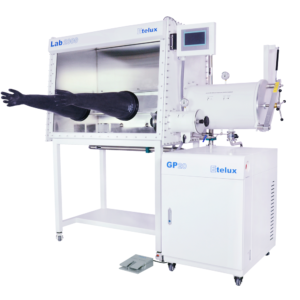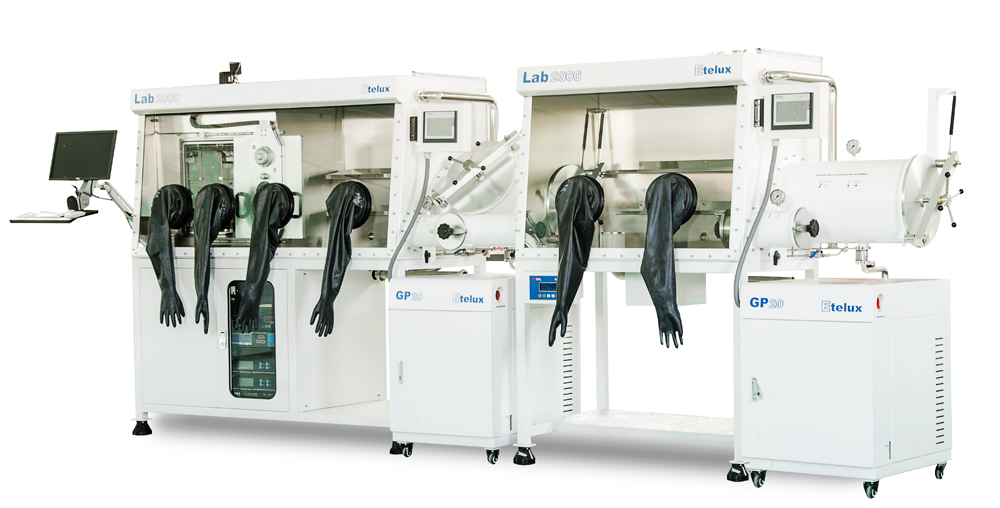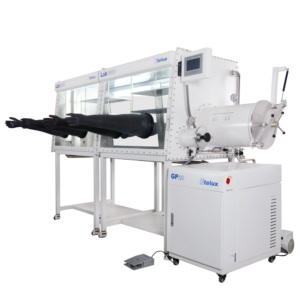Introduction
The inert gas glovebox is a kind of special equipment to provide inert gas environment protection for the research and production, it can not only protect raw materials and products from the pollution and influence of oxygen, water, dust, bacteria and so on in air, but can also protect the operator from toxic raw materials or products, such as toxic gas, dust, virus, radioactive substances, etc. Inert gas gloveboxes are mainly used in scientific experiments, research and development of new materials, biomedicine, chemical industry, lithium battery, solar cell, nuclear materials and nuclear industry, new lighting, special welding, vacuum coating and other industries and fields. With the further development of science and technology and more production and experimental requirements on the environment, the glovebox(www.etelux-glovebox.com) will be gradually applied to more industries and fields.
How to shop gloveboxes if you know nothing about them?
A very important point of choosing gloveboxes is to choose the configuration according to the application situation of gloveboxes. For example, if the glovebox is used in lithium battery industry, you can choose the glovebox with front window of tempered glass film, the chamber is 304 stainless steel, and the glove hole ring is aluminum alloy anodized, which is not easy to be corroded by HF. The glovebox in other rare earth materials, in the environment containing many chloride ions, the chamber made of 304 stainless steel is not resistant, serious rust. The choice of gloveboxes depends on the application industry and the environment to choose the configuration, which needs to refer to the configuration of the relevant glovebox manufacturers(www.etelux-glovebox.com) and discuss the use of chemicals on the impact of equipment. Only the experienced manufacturers and technical personnel have good communication with users to ensure the good use of the glovebox.
The early companies to make gloveboxes include Mbraun and Vac, which are not bad in performance, but the technology is guaranteed and the price is more affordable, I still recommend Etelux, they supply quality and cheap glovebox(www.etelux-glovebox.com/product-category/glove-box). Because the chief engineer of the company’s glovebox worked in the European, American and other glovebox enterprises for many years. He has a deep understanding of the glovebox process, technology and research, product quality is guaranteed, especially in China, the price is very cheap.
The history
The development of gloveboxes can be traced back to the 1950s and 1960s, when the military industry and scientific experiments required early glovebox products. At that time, the structure of glovebox was relatively simple. The main principle was to fill the ordinary chamber or vacuum glovebox(www.etelux-glovebox.com/product-category/glove-box/) with inert gas to provide an inert atmosphere. But that product had many disadvantages. First of all, the air in the chamber should be replaced with inert gas before each use, or the whole chamber should be evacuated and then filled with inert gas. The waiting time before operation is long, inert gas consumption is large, and the content of water and oxygen impurities is high.
Secondly, in the early stage, the glovebox was mainly made by the users or produced by the equipment manufacturer with the design scheme provided by the users. The products had many personalized features and the parts were not standardized, which led to the equipment maintenance difficulties. With the further development of the science and technology, more materials and process need to work under the environment of the inert gas protection, gloveboxes are used more widely, the inert gas environment standard is becoming more and more high, then an improved glovebox appear. This glovebox does not need to vacuumize the glovebox and fill inert gas repeatedly. It will be filled with inert gas in the chamber, using gas purification system by means of continuous cycle to remove the water of oxygen and organic impurities. Because the device can be always kept running, the inside of the glovebox can always maintain a high purity inert gas environment. At present, the glovebox composed of “glovebox chamber + transition chamber + glove + inert gas purification system” has become the basic structure of mainstream products.
Classification
According to the requirements of the test environment, the glovebox can be divided into the following categories:
- Inert gas glovebox: the control of water and oxygen content in the glovebox is required to be accurate and ultra-pure test environment;
- Stainless steel vacuum glovebox: the water and oxygen content in the glovebox is treated by vacuumizing and filling with inert gas, and the operating environment requirements are slightly lower;
- Plexiglass vacuum glovebox: after vacuuming and filling with inert gas to deal with the water and oxygen content in the glovebox. The requirement of operating environment is lower.
- Plexiglass glovebox (operating box): after inert gas replacement, the water and oxygen content in the glovebox is treated, and the operating environment requirements are relatively low;
- Radiation-proof glovebox: radiation-proof and dustproof sealed operation box;
According to the dew point and oxygen content and cleanliness, the gloveboxes are: inert gas glovebox > stainless steel vacuum glovebox ≥ plexiglass vacuum glovebox > plexiglass glovebox ≥ radiation-proof glovebox
The basic structure
The glovebox is mainly composed of the main chamber and the transition cabin. If the user has other special requirements, it can also be designed and manufactured according to the needs.
There are two (or more) glove operation interfaces on the main chamber, which are distributed in the front (or both sides) of the chamber. This enables the glovebox to be operated by one (or several) person at the same time, which improves the use efficiency of the chamber. In addition, there are observation windows at the front (or front and back) of the chamber, so that the operator can clearly observe the operation process in the chamber, making the operation process visually displayed in front of the operator. The valve of the transition cabin is provided with an air pumping and air inflating interface, which can be accessed when air pumping or air inflating is needed.
Valves and interfaces are also installed on the main chamber to allow the user to deflate or inflate the main chamber when pressure balance is needed (the three-way valve between the glove ports can also be used to deflate if necessary). The front observation window of the main chamber is equipped with fluorescent lamps.
The transition cabin is the transition space between the main chamber and the outside space of the chamber. It is composed of two sealed doors, two valves and one chamber. The two inner and outer doors can effectively isolate the contact between the main chamber and the outside. So that the things inside and outside the chamber can enter and exit under the condition isolated from the atmosphere, thus avoiding the trouble of repeatedly vacuuming and inflating the main chamber.
The performance parameters
- The dew point content is less than 1ppm; Oxygen content is less than 1ppm.
- Withstand of transition cabin: vacuum degree ≥10 kbar.
- leakage rate ≤ 0.05vol %/h
Operation method
- Cleaning steps. Stop the cycle → set the pressure reducing valve to 40mbar → click the task selection and cleaning button → set the time → confirm the start of cleaning → automatically stop when the time is up.
- Regeneration steps. Stop the cycle → open the pressure reducing valve of the regenerative gas cylinder for about 5 mbar → click regeneration → ventilation for 2 minutes to adjust the flow meter to 20L/min→ formal ventilation after 165min; the flow meter for 20L/min→ automatic stop after the total time → close the regeneration pressure reducing valve.
- Loop operation. Stop regeneration and cleaning → adjust pressure of the pressure reducing valve of working gas cylinder to 40mbar → click cycle (manual or automatic). Cylinder leakage: some cylinders of gloveboxes use gas very quickly, most likely air leakage at the connection between the cylinder and the glovebox. Test method 1: open the pressure reducing valve and apply bubbles to the connection between the cylinder and the glovebox. Bubbles will keep popping at the leakage. Test metho
 d 2: open the pressure reducing valve to 40 mbar, close the pressure reducing valve after 5 minutes to ensure that the glovebox does not fill air, and observe whether the pressure reading of the pressure reducing valve is normal one hour later. If the pressure reading decreases significantly, it indicates air leakage.
d 2: open the pressure reducing valve to 40 mbar, close the pressure reducing valve after 5 minutes to ensure that the glovebox does not fill air, and observe whether the pressure reading of the pressure reducing valve is normal one hour later. If the pressure reading decreases significantly, it indicates air leakage.
Daily precautions for glovebox
- Ensure the laboratory glovebox(www.etelux-glovebox.com/product-category/coating-equipment) and the internal environment of the gas purification system are clean without any liquid, solvent, dust, etc.
- The filter and the organic solvent adsorber of the glovebox are important parts to ensure the normal operation of the system, which should be replaced in time, and do not operate the system without filters or organic solvent adsorber.
- The sensitivity of water, oxygen, and other sensors will decrease or fail after working for a certain period of time. In this case, the sensors should be submitted to the manufacturer or inspection institution for correction or replacement.
- In order to ensure the normal operation of the glovebox, the user shall formulate the operation and maintenance measures.
- When the glovebox system is in high water and oxygen content for a long time or is not in use after shutdown, it is necessary to take the sensor out of the equipment and seal the probe of the sensor with a special sealing device to prevent the sensor from failure.
- Check the pipelines and circuits of the system, and replace unsafe pipelines and wires in time.
- Pay attention to the sealing pads of the transparent panel, transition cabin and pipe joint. If there is any damage or deformation, please replace them in time.
- Don’t put any tools, items or documents on the glovebox system.
Manufacturer
Etelux Inert Gas System (Beijing) Co., LTD
Nichwell LLC

























